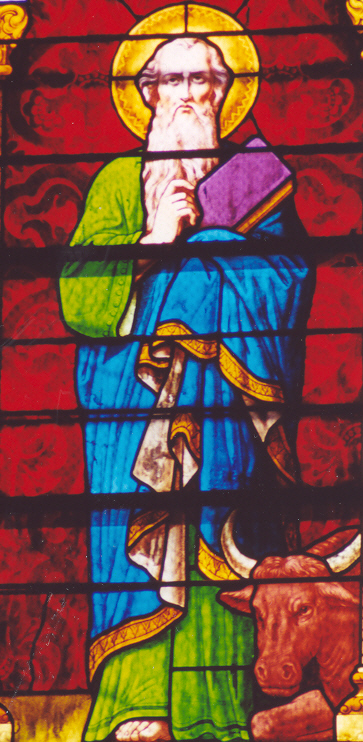
Luke 1:39-45
'Are they the Blessed Mother'? by Rev. Paul
Scalia
Reprinted with permission of "The Arlington Catholic
Herald"
Home Page
To Sunday Gospel Reflections Index
Written to explain that
Christ came to save everyone.

Mary set out and traveled to the hill country in haste to a town of Judah, where she entered the house of Zechariah and greeted Elizabeth. When Elizabeth heard Mary's greeting, the infant leaped in her womb, and Elizabeth, filled with the Holy Spirit, cried out in a loud voice and said, "Blessed are you among women, and blessed is the fruit of your womb. And how does this happen to me, that the mother of my Lord should come to me? For at the moment the sound of your greeting reached my ears, the infant in my womb leaped for joy. Blessed are you who believed that what was spoken to you by the Lord would be fulfilled."
The 3-year-old girl walked into church with her mother. She looked around and saw a group of religious sisters in habit and veil. She tugged at her mother’s sleeve and said, “Look, Mommy! Are they the Blessed Mother?”
Now, the girl’s question is both bad and good. Bad, because it indicates a general confusion about women religious: What do the do? Who are they? Most of the time we do not even get their title right. We call them sisters and nuns interchangeably, but really there is a difference. (Briefly: Sisters have an active apostolate, outside the convent; nuns are contemplative, remaining in the cloister). Worse still, many of our movies and stories give them a bad name for supposed cruelty or irrelevance. But the girl’s question is also good because it provides an answer to our confusion: Women religious are images of Mary.
The account of Our Lady’s visitation illustrates this. Mary visits Elizabeth to help in her last months of pregnancy and at John’s birth. It is a thing commonly done, now as then. Elizabeth needs the help all the more because of her advanced years. But anyone could have done that work. Why did Mary need to make that difficult journey, especially since she was also pregnant? And here we get to the meaning of the scene: Mary’s visit is important not so much for what she does as for who she is. She is the Virgin Mother who bears God Himself in her womb. Anyone could have done the work. Mary alone brings the presence of Christ into the house.
This is the key to understanding women religious. Like Mary, their importance lies not so much in what they do as who they are. Of course, they do important work: teaching, serving the poor, caring for the sick and elderly – and praying most of all. Yet you do not have to be a sister or nun to do these. It is not what women religious do, then, but who they are in doing them that is important. They work and pray after the example of the Virgin Mother – as living icons of her purity and maternity.
They imitate Mary’s purity by way of their chastity, their full dedication to Christ. They are brides of Christ, forgoing natural marriage so as to unite themselves entirely and exclusively to Him. Their chastity witnesses to the all-consuming nature of love. We cannot love with hearts divided, and such women stand as living reminders of that truth. They also teach that the fruitfulness of our prayer and work depends on our love – that is, on our union with Christ.
Women religious imitate Mary also by way of their spiritual maternity. A woman enters religious life not to escape natural marriage and family but to seek that higher call of supernatural, spiritual maternity. As a mother brings children to life by physically nourishing them and suffering for them, so women religious bring life to souls by their prayers and sacrifices.
Here again they witness to something at the heart of the Church: prayer. We fool ourselves into thinking that what we do out in the world is the most important. We call it the “real world.” But women religious by their dedication to prayer and spiritual maternity. Remind us that the most important “work” is prayer and the “real world” is the spiritual life. The Church does not thrive on policies, procedures, inventive new ideas and pure activity. She thrives on prayer.
So, yes, in a sense, religious sisters are the Blessed Mother. Or, put differently, Our Lady, the Virgin Mother, is the first woman religious and the model for all others.
Please consider a tax deductible gift to support this web site.